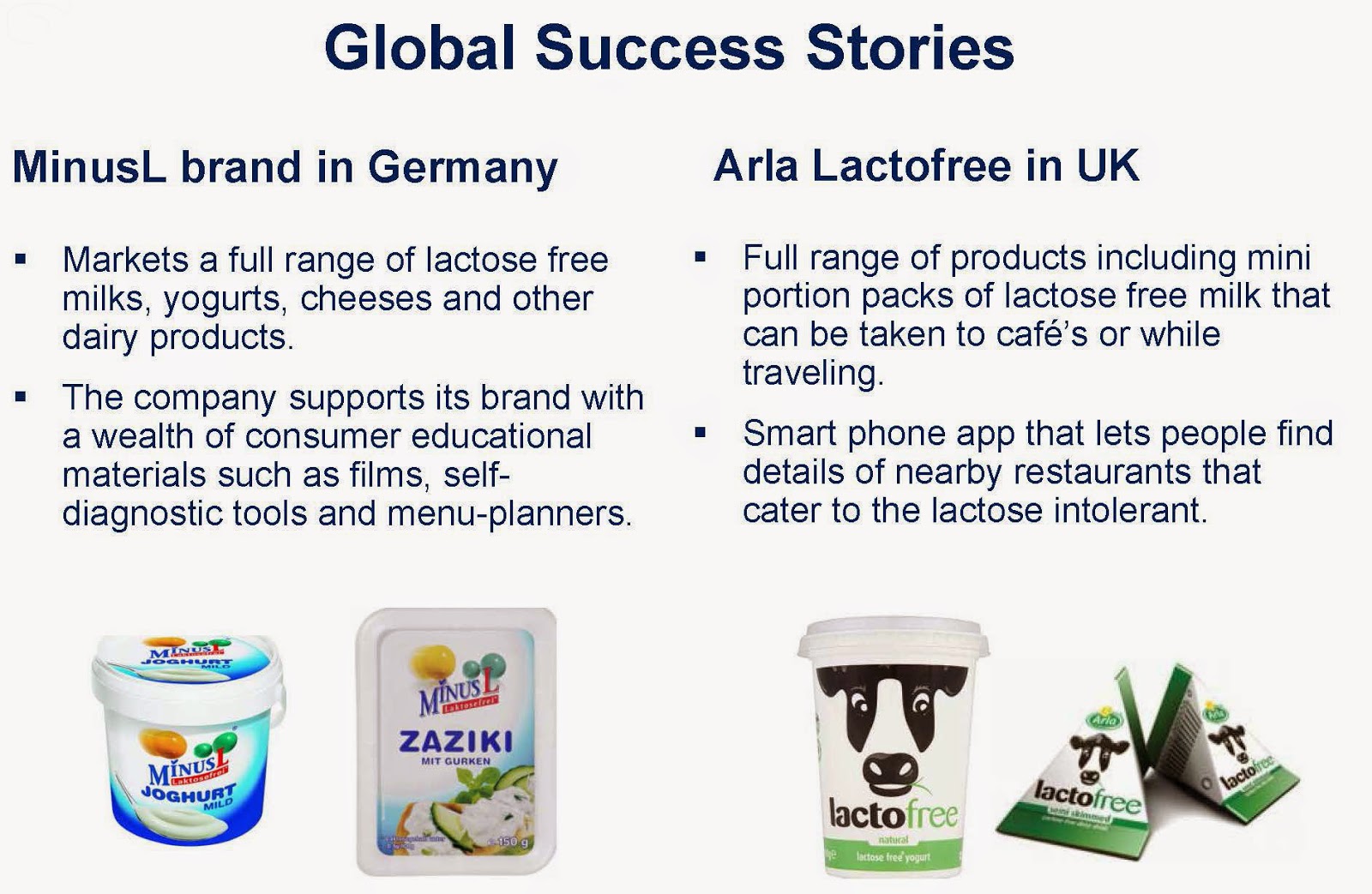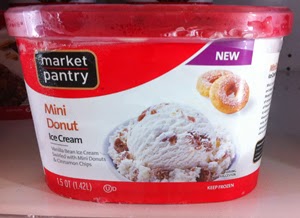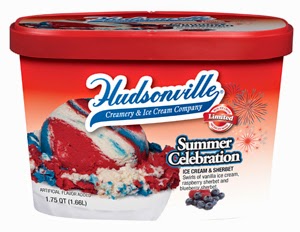Sugar content declarations have long been a sore spot for dairy foods marketers because of milk’s inherent lactose content, as a single 8-fluid-ounce glass of 2% reduced-fat milk inherently contains 11 grams of sugar. Here’s the good news. One of FDA’s proposed updates to the Nutrition Facts is the addition of an “added sugars” line. If this gets approved, a glass of milk will look more appealing to sugar calorie counters…as it contains zero added sugars.
When it comes to other dairy foods, such as flavored milk, flavored yogurt and ice cream, this proposed update presents an opportunity to reformulate to lower added sugars. It’s being done and there are many ingredient technology opportunities available to assist. More on this later in the blog.
First…in case you missed what went down in Washington, D.C., on Thursday, February 27th, simply, FDA has proposed new changes to food package labels in efforts to make them easier to understand. This is the first major update in 20 years. Under the proposed changes, serving sizes will be made easier to understand. Calories will also be featured more prominently and, for the first time, added sugars will be included.
An excellent concise explanation of the proposed changes can be read in Food Business News HERE.
Here's the old look:
Here's the new proposed look. There's time for comments and changes:
If you care to read the more lengthy communication from FDA regarding the proposed changes, link HERE.
And for some consumer press reporting, link to these following sources:
ABC News, CBS News, New York Times, USA Today and Yahoo News.
How do you lower added sugars?
All I am going to address right now is that somewhat controversial “added sugars” line.
As the primary shopper in a household with a diabetic, and with many diabetics in our extended family, all sugars, but particularly added sugars, are often a deciding factor with many food purchases. My family embraces alternative sweeteners, both those recognized as artificial and those considered natural. The proposed label change will definitely impact my purchase decisions.
If you missed the recent Dairy Trends Overview published in IDFA’s SmartBrief on Wednesday, February 26th, you can access it HERE.
The report included this statement:
Lowering added sugars in also trending in the dairy category. This is accomplished by optimizing sweetness through the use of alternative sweeteners, sometimes in conjunction with natural flavors.
What are alternative sweeteners? I define an alternative sweetener as anything that contributes the taste of sweet but has less than four calories per gram, which is what you get with sugar and its relatives. This list includes everything from aspartame to sucralose and chicory root to stevia.
Here’s a product just rolling out that speaks to the “less added sugar” platform of better-for-you dairy foods.
Recently acquired by Dannon, YoCrunch extends its Yopa! brand with Light Plus Fiber & Protein Greek Yogurt with 9 Whole Grain Granola. Hitting store shelves this coming week, this product is all about less sugar, fewer calories and more protein.
Check out this infographic for nutritionals.
How does this product achieve these sugar and calorie reductions? Some of the responsible ingredients are: acesulfame potassium, sucralose, soluble corn fiber and chicory root.
In case you were unaware of some other dairy foods that are all about lower adder sugars, check these out.
Dean’s TruMoo brand’s initial mission has always been about lowering added sugars. At the beginning of 2013, the brand’s new retail chocolate milk debuted with 35% less total sugar than the leading chocolate milk competitor. It also has 40% less sugar than its previous formula. One 8-ounce serving of TruMoo chocolate milk contains just 30 more calories than plain low-fat white milk. Like regular milk, TruMoo provides eight essential nutrients: calcium, protein, vitamins A, D and B12, riboflavin, phosphorus and potassium.
This product is just hitting the marketplace. fairlife LLC introduces a high nutrition milk that will raise consumer interest for better-tasting, more nutritious milk products. Introduced to the Minneapolis and Denver regions in early February, “fairlife purely nutritious milk” has 50% more natural protein and calcium and half the sugars of ordinary milk, all while being delicious real milk, with no protein powders. It is also lactose free. The new line of milk, which comes in three varieties, is produced by cold-pressing farm-fresh milk through soft filters to concentrate desired nutrients such as protein and calcium while separating out the fats and sugars.
The three varieties and their nutritional profile (per 8-fluid-ounce serving) are:
Chobani gets it, too. Have you heard about the 100-calorie cup? Chobani’s Simply 100 Greek Yogurt is a 100-calorie authentic strained Greek Yogurt made with only natural ingredients. The product comes in six flavors: Black Cherry, Blueberry, Peach, Pineapple, Strawberry and Vanilla.
Graeter’s is launching its first significant new product expansion in the ice cream manufacturer’s 144-year history with the introduction of A Little Less Indulgent ice cream. According to the company, the “A Little Less Indulgent” line stands apart from other reduced-sugar ice cream varieties thanks to the sweetness provided by a natural sugar substitute made from monk fruit extract. The sweetener is 150 times sweeter than regular sugar and releases slowly into the body, so blood sugar will not spike.
The dairy foods industry has the tools to create delicious products with fewer added sugars. Let’s show the rest of the food industry we can do it!
When it comes to other dairy foods, such as flavored milk, flavored yogurt and ice cream, this proposed update presents an opportunity to reformulate to lower added sugars. It’s being done and there are many ingredient technology opportunities available to assist. More on this later in the blog.
First…in case you missed what went down in Washington, D.C., on Thursday, February 27th, simply, FDA has proposed new changes to food package labels in efforts to make them easier to understand. This is the first major update in 20 years. Under the proposed changes, serving sizes will be made easier to understand. Calories will also be featured more prominently and, for the first time, added sugars will be included.
An excellent concise explanation of the proposed changes can be read in Food Business News HERE.
Here's the old look:
Here's the new proposed look. There's time for comments and changes:
If you care to read the more lengthy communication from FDA regarding the proposed changes, link HERE.
And for some consumer press reporting, link to these following sources:
ABC News, CBS News, New York Times, USA Today and Yahoo News.
How do you lower added sugars?
All I am going to address right now is that somewhat controversial “added sugars” line.
As the primary shopper in a household with a diabetic, and with many diabetics in our extended family, all sugars, but particularly added sugars, are often a deciding factor with many food purchases. My family embraces alternative sweeteners, both those recognized as artificial and those considered natural. The proposed label change will definitely impact my purchase decisions.
If you missed the recent Dairy Trends Overview published in IDFA’s SmartBrief on Wednesday, February 26th, you can access it HERE.
The report included this statement:
Lowering added sugars in also trending in the dairy category. This is accomplished by optimizing sweetness through the use of alternative sweeteners, sometimes in conjunction with natural flavors.
What are alternative sweeteners? I define an alternative sweetener as anything that contributes the taste of sweet but has less than four calories per gram, which is what you get with sugar and its relatives. This list includes everything from aspartame to sucralose and chicory root to stevia.
Here’s a product just rolling out that speaks to the “less added sugar” platform of better-for-you dairy foods.
Recently acquired by Dannon, YoCrunch extends its Yopa! brand with Light Plus Fiber & Protein Greek Yogurt with 9 Whole Grain Granola. Hitting store shelves this coming week, this product is all about less sugar, fewer calories and more protein.
Check out this infographic for nutritionals.
How does this product achieve these sugar and calorie reductions? Some of the responsible ingredients are: acesulfame potassium, sucralose, soluble corn fiber and chicory root.
In case you were unaware of some other dairy foods that are all about lower adder sugars, check these out.
Dean’s TruMoo brand’s initial mission has always been about lowering added sugars. At the beginning of 2013, the brand’s new retail chocolate milk debuted with 35% less total sugar than the leading chocolate milk competitor. It also has 40% less sugar than its previous formula. One 8-ounce serving of TruMoo chocolate milk contains just 30 more calories than plain low-fat white milk. Like regular milk, TruMoo provides eight essential nutrients: calcium, protein, vitamins A, D and B12, riboflavin, phosphorus and potassium.
This product is just hitting the marketplace. fairlife LLC introduces a high nutrition milk that will raise consumer interest for better-tasting, more nutritious milk products. Introduced to the Minneapolis and Denver regions in early February, “fairlife purely nutritious milk” has 50% more natural protein and calcium and half the sugars of ordinary milk, all while being delicious real milk, with no protein powders. It is also lactose free. The new line of milk, which comes in three varieties, is produced by cold-pressing farm-fresh milk through soft filters to concentrate desired nutrients such as protein and calcium while separating out the fats and sugars.
The three varieties and their nutritional profile (per 8-fluid-ounce serving) are:
- Skim white milk: 80 calories, 0 grams fat, 6 grams sugar and 13 grams protein
- 2% white milk: 120 calories, 4.5 grams fat, 6 grams sugar and 13 grams protein
- 2% chocolate milk: 140 calories, 4.5 grams fat, 12 grams sugar and 13 grams protein
Chobani gets it, too. Have you heard about the 100-calorie cup? Chobani’s Simply 100 Greek Yogurt is a 100-calorie authentic strained Greek Yogurt made with only natural ingredients. The product comes in six flavors: Black Cherry, Blueberry, Peach, Pineapple, Strawberry and Vanilla.
To keep calories at 100, the yogurt is sweetened with chicory root fiber, evaporated cane juice, monk fruit extract and stevia leaf extract.
The new line has 50% less sugar and also has roughly 25% less fat and 25% fewer calories than Graeter’s regular ice cream, making it just a little less indulgent while retaining all the flavor of Graeter’s traditional ice cream, according to the company.
The dairy foods industry has the tools to create delicious products with fewer added sugars. Let’s show the rest of the food industry we can do it!




































































































































































































